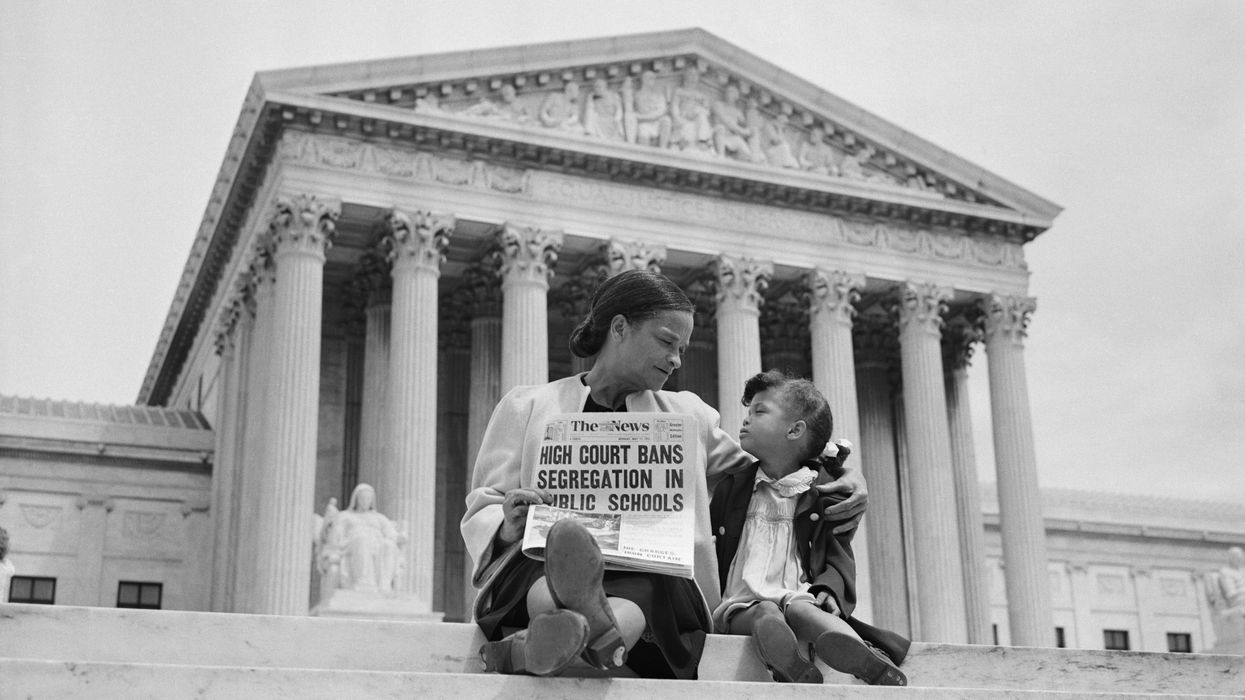Frankenberg is a professor of education and demography at Penn State University.
Brown vs. Board of Education, the pivotal Supreme Court decision that made school segregation unconstitutional, turns 70 years old on May 17, 2024.
At the time of the 1954 ruling, 17 U.S. states had laws permitting or requiring racially segregated schools. The Brown decision declared that segregation in public schools was “inherently unequal.” This was, in part, because the court argued that access to equitable, nonsegregated education played a critical role in creating informed citizens – a paramount concern for the political establishment amid the Cold War. With Brown, the justices overturned decades of legal precedent that kept Black Americans in separate and unequal schools.
As a professor of education and demography at Penn State University, I research racial desegregation and inequality in K-12 schools. I’m aware that, after several decades of unraveling of desegregation progress, the upcoming Brown vs. Board of Education anniversary comes at an especially uncertain moment for public education and efforts to make America’s schools reflect the nation’s multiracial society.
Recent setbacks
In June 2023, the Supreme Court ended most race-conscious college admissions efforts. The decision followed the COVID-19 pandemic, which exacerbated racial inequalities in the U.S.
Meanwhile, politicians and school boards have banned or removed books by authors of color from school libraries and restricted teaching about racism in U.S. history. I believe these legal setbacks amid the current political climate make finally realizing the full promise of Brown more urgent.
Resistance to Brown ruling
The Brown vs. Board of Education decision did not immediately change the nation’s public schools, especially in the completely segregated South, where there was massive resistance to desegregation. Resistance was so fierce in the first decade after Brown that compliance with desegregation orders at times required federal troops to escort Black students to enroll in formerly all-white schools.
It would be a decade after Brown before the federal courts, a newly enacted Civil Rights Act and expanded federal education funding spurred greater compliance with desegregation requirements.
While only 2% of Southern Black K-12 students attended majority white schools in 1964 – 10 years after Brown – the number had grown to 33% by 1970. The South surpassed all other regions in desegregation progress for Black students.
Segregation persists
Public school students today are the most racially diverse in U.S. history. At the time of Brown, about 90% of students were white and most other students were Black.
Today, according to a 2022 federal report, 46% of public school students are white, 28% are Hispanic, 15% are Black, 6% Asian, 4% multiracial and 1% American Indian. Based on my analysis of 2021 federal education data, public schools in 22 states and Washington, D.C., served majorities of students of color.
And yet, public schools are deeply segregated. In 2021, approximately 60% of Black and Hispanic public school students attended schools where 75% or more of students were students of color. Black and Hispanic students who attend racially segregated schools also are overwhelmingly enrolled in high-poverty schools.
A 2019 report by EdBuild, a nonprofit that produced reports on school funding inequities, found that schools in predominantly nonwhite districts received $23 billion less in funding each year than schools in majority white districts. This equates to roughly $2,200 less per student per year. Unequal funding results in less student access to advanced, college-prep courses, to name just one example.
Benefits of diversity
While Brown was an attempt to address the inequality that students experienced in segregated Black schools, the harms of segregation affect students of all races.
Racially integrated schools are associated with reduced prejudice, enhanced critical thinking or simply building cross-racial friendships that teach children how to work effectively with others.
White students are the least exposed to students of other races and ethnicities, and therefore they often miss out on the benefits of diversity. Nearly half of white public school students attend a school in which white students are 75% or more of the student body.
Factors that exacerbate segregation
Although residential segregation is slowly declining, many U.S. communities remain both racially and economically segregated. Segregated schools, therefore, often reflect segregated neighborhoods.
However, how students are assigned to schools and districts can play a key role in how segregated those schools are.
This is because school attendance boundaries often determine which local public school a student may attend. How those boundaries are drawn or redrawn can exacerbate or alleviate school segregation. More than 13,000 U.S. public schools that are predominantly of one race are located within 10 miles of a school that is predominantly of another race.
Studies show that redrawing school attendance zones within school districts could make a substantial number of schools less segregated.
The same is true when it comes to school district boundaries. A high level of income and racial segregation also exists between neighboring school districts. And district secession – when schools leave an existing school district to form a new district – is linked to higher segregation. Redrawing district boundaries or preventing the formation of new boundaries could affect segregation.
Another key factor is the rise of public school choice, which allows parents to send children to charter schools or other schools beyond their zoned school. One study found that areas with more students enrolled in charter schools were associated with higher school segregation.
Potential solutions
Several hundred remedial court desegregation orders, which require districts to eradicate segregation that existed prior to the Brown decision, still exist. These are largely concentrated in some Southern states.
For the rest of the country, voluntary integration efforts are attempts to finally achieve the goals of the Brown decision. These include Berkeley, California’s elementary school assignment plan and legal cases brought against states including Minnesota that challenge existing segregation under state constitutions.
Finally, since reducing residential segregation could also reduce school segregation, some efforts have combined school desegregation and housing integration policies. Connecticut, for example, has piloted coordinating housing mobility vouchers for eligible participants in its interdistrict school desegregation program.
Like 70 years ago when Brown was decided, addressing public school segregation remains important for a healthy democracy – one that today is more multiracial than ever before. ![]()
This article is republished from The Conversation under a Creative Commons license. Read the original article.


















